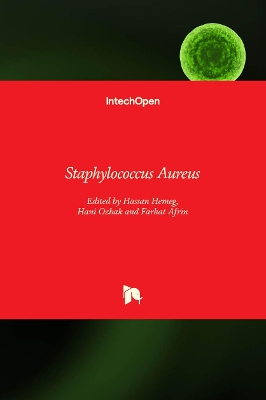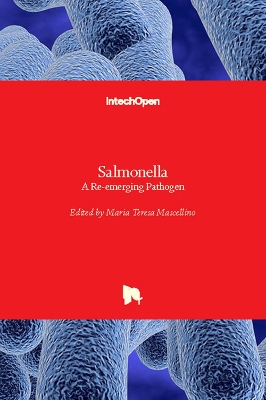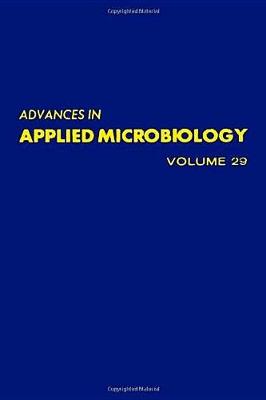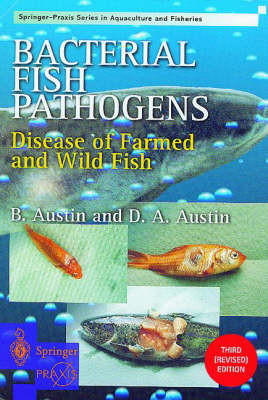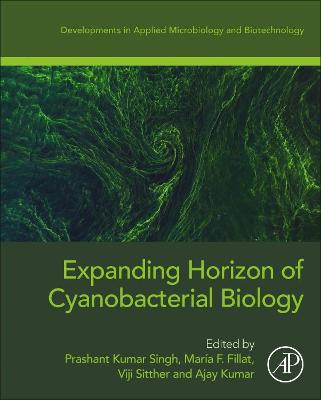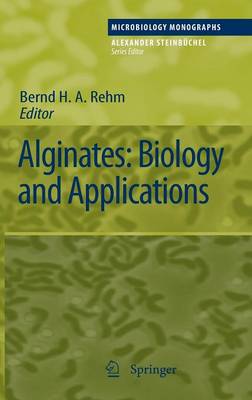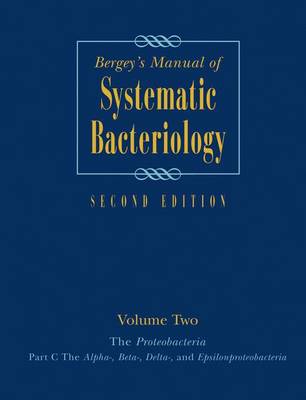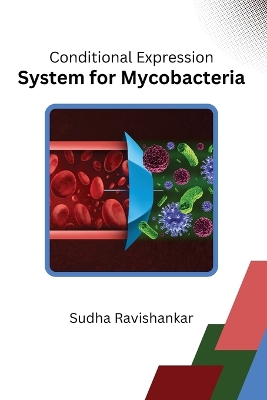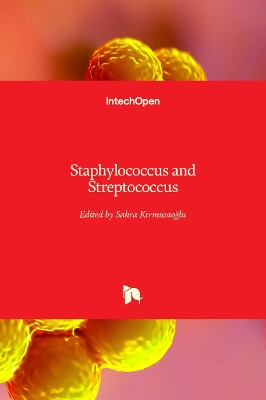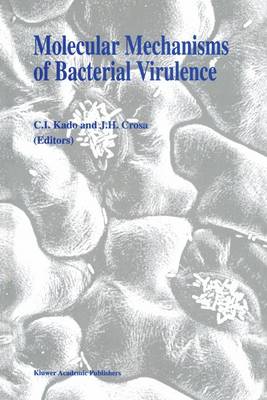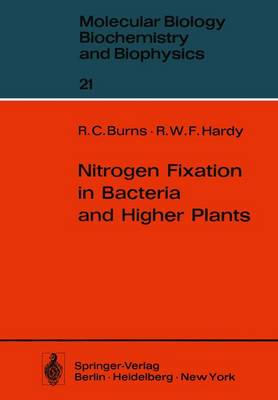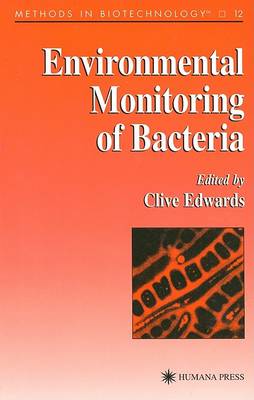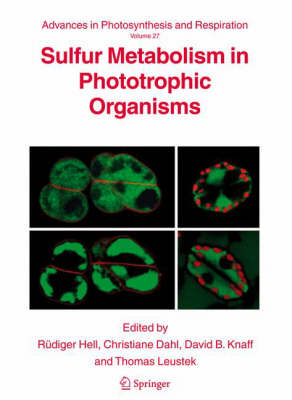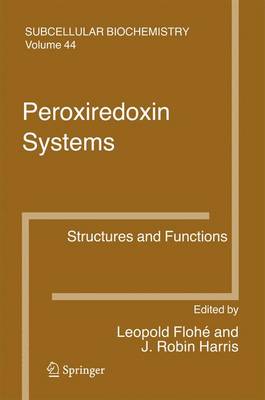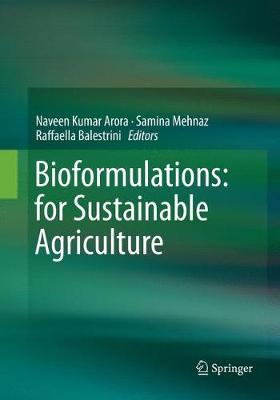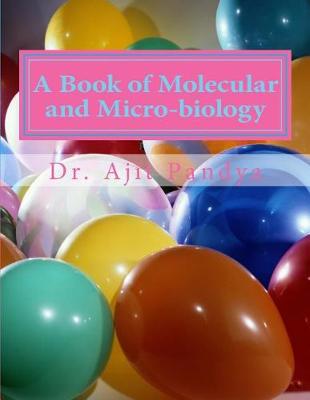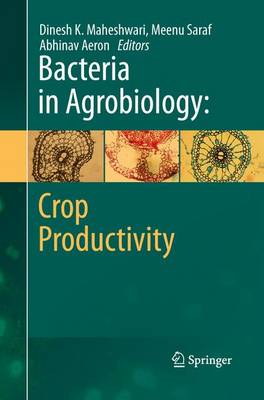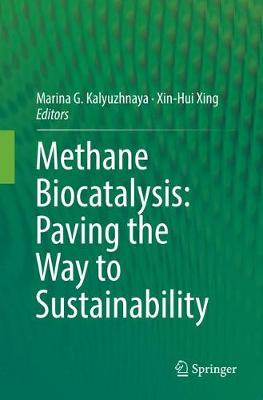Staphylococcus Aureus
Staphylococcus aureus strains are an important medical infectious agent that causes a wide range of pathogeneses starting from colonization of the skin and mucosal surface to severe pathogenic effects such as septicemia. The mortality and morbidity from this pathogen are challenging issues for the healthcare premises. Methicillin Resistant Staphylococcus aureus strains (MRSA) are causing severe infections due to the genes that are resistant to several antibiotics including methicillin, aminoglyc...
Salmonella
This book deals with the microorganism Salmonella. This bacterium is well known for a long time, being involved in systemic (typhus and paratyphus infections) and nonsystemic diseases such as food poisoning. Major and minor Salmonellae are widespread worldwide in developing countries and industrialized areas, respectively. In 2015, about 3576 Salmonella strains have been isolated from human infections in Italy. S. typhimurium and S. enteritidis are the most prevalent serotypes and represent 80%...
Advances in Applied Microbiology (Advances in Applied Microbiology, #39)
"Advances in Applied Microbiology" covers a broad range of topics in the fields of applied microbiology and biotechnology. These volumes provide articles which should be of interest to biotechnology researchers in academia and industry, fermentation microbiologists, microbial ecologists, biochemical engineers and applied microbiologists in other speciality areas.
Bacterial Fish Pathogens (Springer Praxis Books) (Springer Praxis Books / Aquaculture and Fisheries)
by Brian Austin and D. A. Austin
The economic importance of bacterial fish diseases and the increased understanding of the taxonomy and pathology of fish that has occurred during the last ten years, has resulted in this completely revised and updated edition of Biological Fish Pathogens, first published in 1987. The book provides comprehensive coverage of bacterial fish pathogens and, crucially, diagnostic methods of identification and techniques for isolating those pathogens. The authors also discuss methods used to control ba...
Expanding Horizon of Cyanobacterial Biology (Developments in Microbiology)
Expanding Horizon of Cyanobacterial Biology discusses the different aspects of cyanobacteria cyanobacterial application, providing a better understanding of cyanobacterial metabolism. Chapters deal with cyanobacteria applications and explore how to exploit cyanobacterial metabolism for industrial applications. Sections cover cyanobacterial applications for the production of nanoparticles, cyanobacterial diversity, and the characterization of different assemblages such as cyanolichens and cyanoba...
Alginates: Biology and Applications (Microbiology Monographs, #13)
"Alginates: Biology and Applications" provides an overview of the state of art of alginate material properties, genetics and the molecular mechanisms underlying alginate biosynthesis as well as applications of tailor-made alginates in medicine, food and biotechnology. Topics treated are: material properties of alginates, alginate production: precursor biosynthesis, polymerization and secretion, bacterial system for alginate uptake and degradation, enzymatic alginate modification, alginate gene r...
An account of the life of the germ. Germs get a bad press, so we never hear their side of the story. What is life really like in their invisible kingdom? Arno Karlen tells the fascinating life story of the germ "Borrelia burgdorferi"(Bb for short), the microbe that causes Lyme disease. He takes us through its ancestry, its appearance, its environment, its sex life, its struggle for survival, and its adventures with other species, including us. Interwoven with Bb's biography are fascinating discu...
Candida Albicans (Methods in Molecular Biology, #499)
Over the course of the past decade, there have been remarkable advances in the study of human pathogenic fungi. These developments have taken place throughout a wide range of disciplines, and have come as the result of newly available genome sequences of pathogens such as candida albicans and other model fungi. In Candida Albicans: Methods and Protocols, expert researchers explore these exciting new insights, focusing on the study of medically important fungi and Candida spp in particular. Chapt...
Bergey's Manual® of Systematic Bacteriology
Includes a description of the Alpha-, Beta-, Delta-, and Epsilonproteabacteria (1256 pages, 512 figures, and 371 tables). This large taxa include many well known medically and environmentally important groups. Especially notable are Acetobacter, Agrobacterium, Aquospirillum, Brucella, Burkholderia, Caulobacter, Desulfovibrio, Gluconobacter, Hyphomicrobium, Leptothrix, Myxococcus, Neisseria, Paracoccus, Propionibacter, Rhizobium, Rickettsia, Sphingomonas, Thiobacillus, Xanthobacter and 268 addit...
Conditional Expression System for Mycobacteria
by Sudha Ravishankar
Staphylococcus and Streptococcus
Staphylococcus spp. and Streptococcus spp. have not only got pathogenic isolates, but also non-pathogenic isolates. Staphylococcus spp. and Streptococcus spp. that are Gram positive cocci are the main pathogens in several infections. Virulence factors such as usual and unusual surface proteins encoded by resistance genes are the main causes of pathogenesis. Multidrug-resistant pathogens that are the main causes of morbidity and mortality worldwide have the ability to synthesize a number of destr...
Molecular Mechanisms of Bacterial Virulence (Developments in Plant Pathology, #3)
This volume brings together studies on the differences and profound similarities in the molecular mechanism of virulence between bacteria pathogenic for humans, animals and plants. Topics covered include: host cell recognition and binding, pathogen ingression and invasive mechanism, enzymes, toxins and other pathogenic factors, regulation of virulence genes and signal transduction, and pathogen of host-defence mechanisms.
Our knowledge of the biochemistry and biophysics of dinitrogen fixa- tion has developed rapidly in the 15 years since the first N2-fixing enzyme system was successfully extracted from a bacterium. This peri- od has produced a literature that now describes the N2 fixation reac- tion and the nitrogenase enzyme itself in sophisticated terms, though a detailed reaction mechanism at the chemical level has not yet emerged. It is the purpose of the present monograph to present an in-depth re- view, ana...
Environmental Monitoring of Bacteria (Methods in Biotechnology, #12)
Env1r0nmenta1 ha5 m1cr0610109y emer9ed an extreme1y act1ve, - and 1mp0rtant area 0f re5earch dur1n9 the few year5 and ha5 cha1- 1en9ed 50me 10n9-he1d 0f F0r examp1e, the num6er5 0f c010ny-f0rm1n9 un1t5 06ta1ned 0n a9ar med1a have way5 6een a55umed t0 ref1ect the num6er5 0f 6acter1a pre5ent any 91ven 5amp1e. H0wever, n0w kn0wn that many 6acter1a the 1a60rat0ry ad0pt unu5ua1 d0rmant 5tate5 when 5u6jected t0 the nutr1ent-1- c0nd1t10n5 1ted c0mm0n many ec05y5tem5, wh1ch, turn, make5 the5e 6- ter1a t...
Sulfur Metabolism in Phototrophic Organisms (Advances in Photosynthesis and Respiration, #27)
Sulfur is one of the most versatile elements in life due to its reactivity in different oxidation and reduction states. In phototrophic organisms, the redox properties of sulfur in proteins, and of sulfur-containing metabolites, are particularly important in the interaction between the reductive assimilation processes of photosynthesis and reactive oxygen species that arise as by-products of electron transport chains. Thiol groups in proteins and metabolites are targets of reactive oxygen specie...
This book contains a broad survey on the peroxiredoxins. It involves almost all groups that contributed significant insights into the emerging field. Coverage discusses the diverse biological roles of the new protein family in the context of other antioxidant systems like those based on heme or selenium catalysis. In addition, the book highlights related future perspectives.
Repetitorium Der Gesamten Hygiene, Bakteriologie Und Serologie in Frage Und Antwort
by W Schurmann
Dieser Buchtitel ist Teil des Digitalisierungsprojekts Springer Book Archives mit Publikationen, die seit den Anfangen des Verlags von 1842 erschienen sind. Der Verlag stellt mit diesem Archiv Quellen fur die historische wie auch die disziplingeschichtliche Forschung zur Verfugung, die jeweils im historischen Kontext betrachtet werden mussen. Dieser Titel erschien in der Zeit vor 1945 und wird daher in seiner zeittypischen politisch-ideologischen Ausrichtung vom Verlag nicht beworben.
Bioformulations: for Sustainable Agriculture
More than a century has passed since the first bioformulations were introduced to the market. But there is still much to be done, explored and developed. Though bioformulations offer green alternatives and are important for sustainable agriculture, they make up only a small fraction of the total additions used to enhance crop yields or protect them from pests. There is a great need to develop bioformulations that can promote confidence among end users; accordingly, it is imperative that bioformu...
Bacteria in Agrobiology: Crop Productivity
The future of agriculture greatly depends on our ability to enhance productivity without sacrificing long-term production potential. The application of microorganisms, such as the diverse bacterial species of plant growth promoting rhizobacteria (PGPR), represents an ecologically and economically sustainable strategy. The use of these bio-resources for the enhancement of crop productivity is gaining importance worldwide. Bacteria in Agrobiology: Crop Productivity focus on the role of beneficial...
Microscopic Internal Flaws Inducing Fracture in Steel
by Thomas Andrews
Methane Biocatalysis: Paving the Way to Sustainability
This book provides in-depth insights into the most recent developments in different areas of microbial methane and methanol utilization, including novel fundamental discoveries in genomics and physiology, innovative strategies for metabolic engineering and new synthetic approaches for generation of feedstocks, chemicals and fuels from methane, and finally economics and the implementation of industrial biocatalysis using methane consuming bacteria. Methane, as natural gas or biogas, penetrates...
